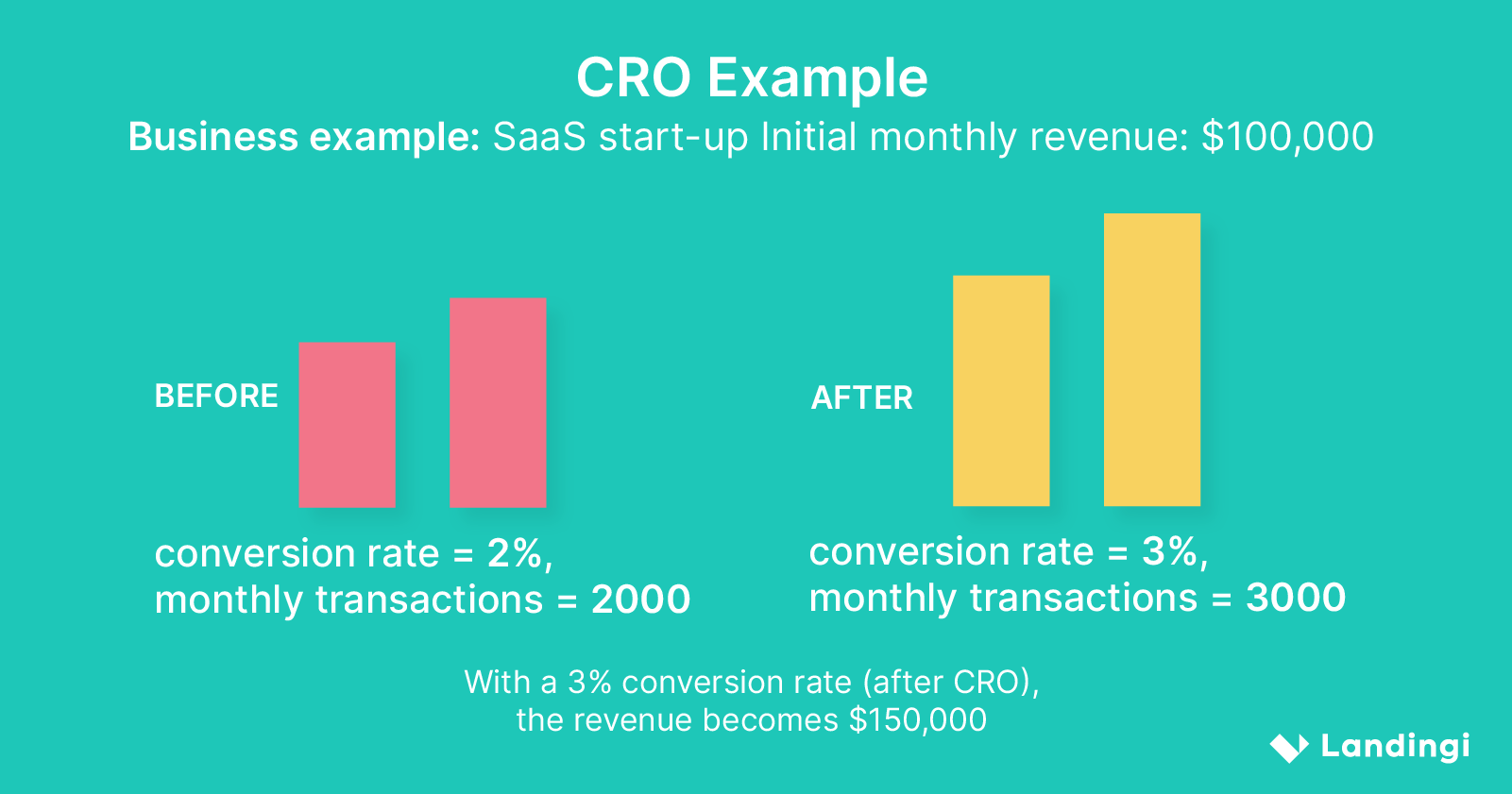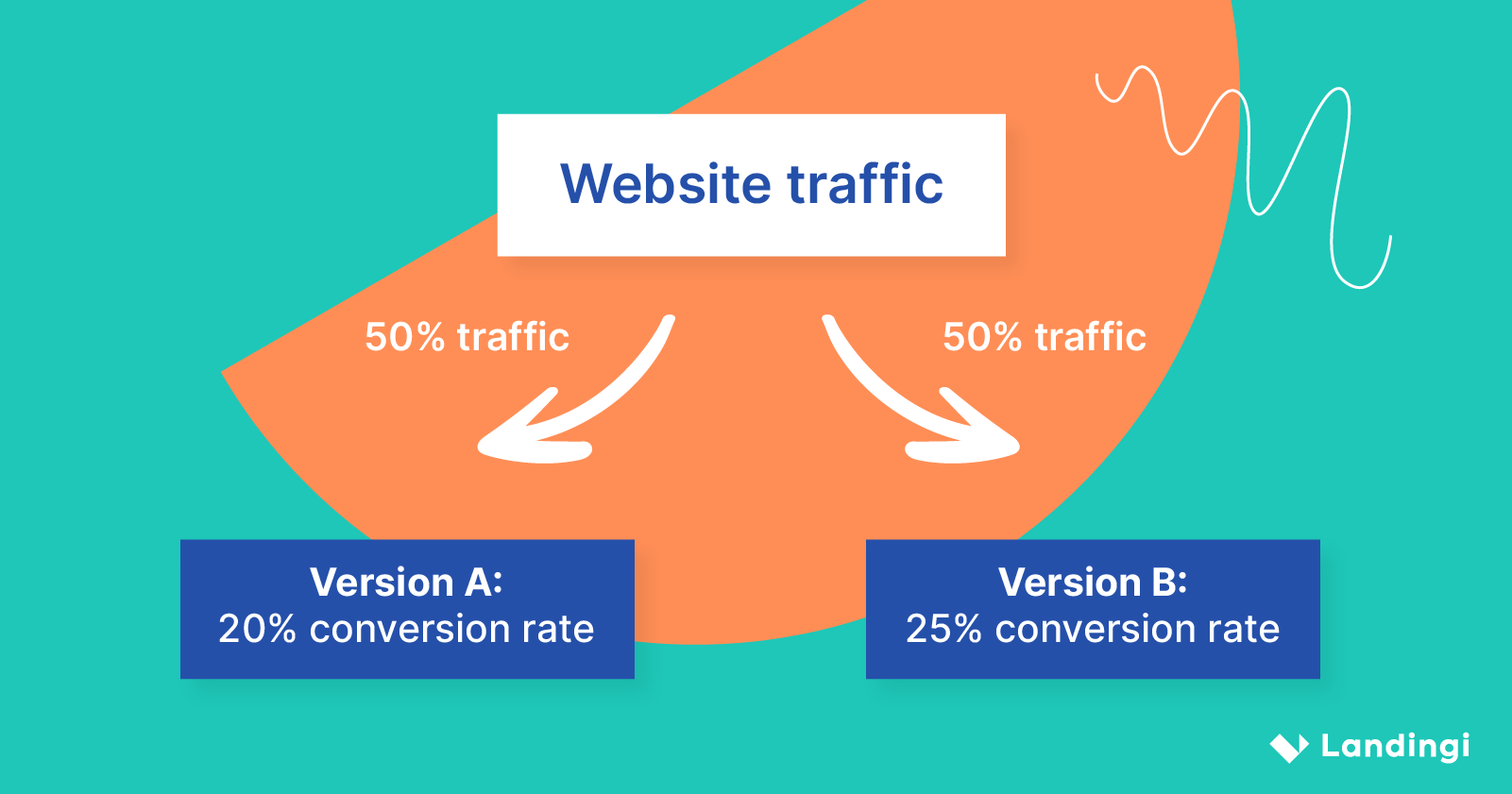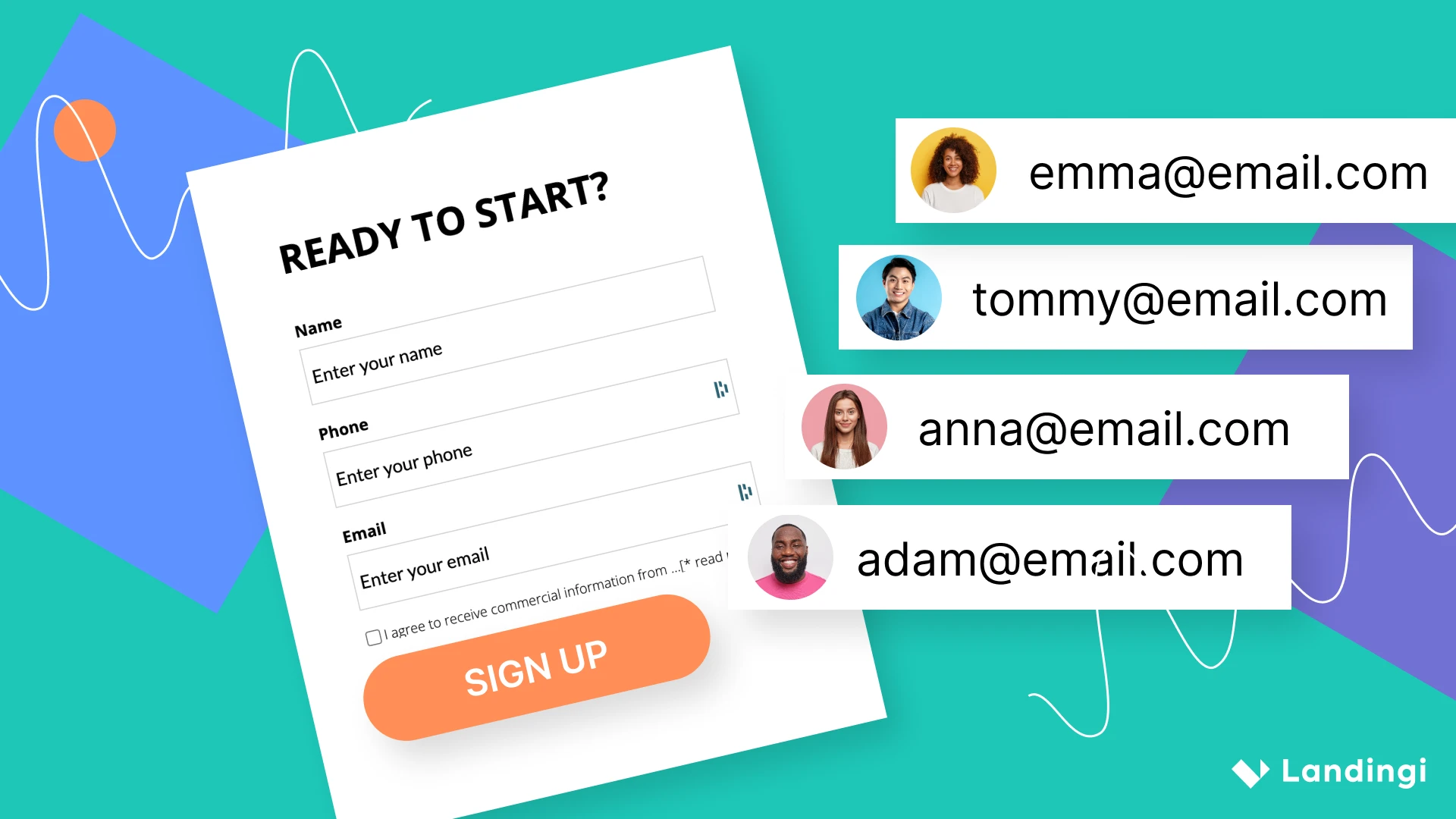Conversion Rate Optimization has been around as long as sales, but now you can tap into the potential of data and discover the advantages of using a CRO strategy to scale your business.
While the long-term process of CRO seems complex and difficult, it’s good to know better what targets you are aiming for. Using software products provided by the digital marketing industry, e.g., Landingi – a conversion optimization tool that allows you to simplify the CRO process in your company.
This article will help you understand the value of CRO strategy and show the 5 main benefits of conversion rate optimization.
Make your sections smartable and let go of mundane manual tasks with Smart Sections! An easy way to manage bulk changes.
Why Is Conversion Rate Important?
Conversion rate is a key metric for your business because it provides real data that relates to the percentage of visitors or users who took the desired action.
Conversion rate = total conversions / total visitors * 100%
Depending on strategy, the desired action can be:
- purchasing a product,
- signing in for a newsletter,
- booking a call, etc.
In digital marketing strategies, the main target is always the same: to increase conversion, for a simple reason – the higher the conversion rate, the higher the revenue.
To clearly understand what the conversion rate (CR) is, try looking back to the past, when sales were unpredictable, yet still profitable. Ancient merchants knew that if one day customers bought 10 pieces of their products, and the next day 8 pieces, the conversion rate decreased by 20%. With that information, they had to take appropriate action to increase sales, for example hanging products higher, at eye level of market visitors.
The same happens in today’s digital marketing: if the conversion rate of your product or service decreases, you have to implement changes that will reverse the situation. It is essential to understand how data brings great information sellers can use to increase revenue in their business and make several steps to optimize CR.
While processing CRO with appropriate tools, you are allowed to track valuable data.
The list of 10 data metrics below shows the information that can be obtained during the optimization process:
- Conversion Rates: Fraction of visitors who take desired actions.
- User Behavior: Track how visitors navigate and interact with your site.
- A/B Testing Results: Compare performance between different versions of a webpage.
- Funnel Analysis: Identify drop-off points in the conversion process.
- Heatmaps: Visualize where users click, move, and spend time on a webpage.
- Session Recordings: View recordings of user sessions to understand their journey.
- Form Analytics: Evaluate the performance of forms and identify optimization opportunities.
- User Surveys: Gather direct feedback from users to understand their preferences.
- Page Load Times: Assess website speed, impacting user experience and conversions.
- Device and Browser Data: Understand user preferences across different devices and browsers.
According to Ruler Analytics, the average conversion rate in 2023 is only 2.9%, referring to all industries. It means there is still a space for optimization in your company to get better results.
Why do we need CRO?
CRO – Conversion Rate Optimization – is needed as an indicator of any company’s growth strategy and is significant for increasing the percentage of potential customers.
Firstly, conversion is a measure that shows the efficiency of your business, secondly – your business requires a great strategy to keep conversion on a profitable level, and CRO is one of the digital marketing strategies you should implement to achieve specified goals.
Optimization means changes, which refer to already existing elements but focus on improving them in a way that provides higher profits from customers and traffic.
CRO can include optimizing for mobile devices, changing the design of landing pages, creating clear CTAs, and more.
If a company whose main revenues come from online traffic won’t implement any changes in the age of UX, it’s more than obvious that business will drop on a scale. To answer visitors’ or users’ needs, optimization is the only way to stay on a boat.
To realize the way CRO is truly needed as a digital marketing strategy, take a look at some essential statistics below, which highlight its importance:
- CrazyEgg provides data: Typical website bounce rates range from 26% to 70%. This indicates that a significant majority of visitors exit the site, without engaging in favorable actions, such as registration or downloading.
- Econsultancy says: A mere 22% of businesses are content with their conversion rates, indicating that the remaining 78% are dissatisfied and seek to convert a higher percentage of visitors into customers.
- According to Verified Market Research: The worldwide market for conversion rate optimization software was approximated at $771 million in 2018. Projections suggest a 10% growth, reaching $1,932 million by 2026.
Why is CRO important for business?
Conversion Rate Optimization (CRO) is crucial for business as it maximizes the value from existing website traffic, leading to increased revenue and improved profitability. For example, even a 3% improvement in the conversion rate can result in a substantial boost in sales without the need for additional marketing expenses.
Data-driven marketing, including CRO, is the only way to run a business without uncertainty about strategies. A basic ROI strategy is good enough to see the actual revenues, but means too little without side-strategies, which show gaps you should cover for better results.
The newest 2023 stats provided by EnterpriseAppsToday say that the average ROI for marketers using CRO tools is 223%, but still, around 68% of small companies do not adhere to any CRO strategy.
CRO includes several techniques you can use to improve user experience and at the same time increase conversion rates, including implementing A/B tests and analysis of Customer Journey, which provide real data about the efficiency of implemented changes.
5 Advantages of CRO
To fully understand the potential of CRO, take a look at 5 main benefits of conversion rate tracking with the implementation of essential changes:
- Increasing ROI factor
- Making data-driven decisions
- Improving UX factor
- Adaptation to changing trends
- Improving CAC factor
Take a moment and learn more about the benefits of CRO strategies – check out the explanation below and find out what they can really bring to a business.
#1 Increasing ROI factor
Conversion Rate Optimization (CRO) plays a pivotal role, directly impacting your ROI. The enhancements implemented on your website through CRO, not only convert more leads into clients, but also contribute to an elevated ROI for your business.
Business example: SaaS start-up
Initial monthly revenue: $100,000
Imagine a SaaS website with a monthly revenue of $100,000 has a conversion rate of 2%, resulting in 2,000 monthly transactions.
By implementing CRO strategies and improving the conversion rate by just 1%, the transactions increase to 3,000.
If the average order value is $50, the revenue with a 2% conversion rate is $100,000, while with a 3% conversion rate (after CRO), the revenue becomes $150,000.

For SaaS company example:
- Original Revenue: $100,000
- Initial Conversion Rate: 2%
- Improved Conversion Rate: 3%
- New Revenue: $150,000
The increase in revenue due to the 1% improvement in conversion rate is $50,000. Therefore, in this scenario, CRO contributes to a 1% increase in ROI, which can be significant for businesses operating at scale.
#2 Making data-driven decisions
Data-driven decisions create a pragmatic business model which is required to run scalable sales. To use the full potential of digital marketing, you need to gain data-based feedback about taken actions.
Conversion Rate Optimization (CRO) eliminates uncertainty in decision-making. It provides valuable insights into the effectiveness of strategies, distinguishing those that excel, and those requiring improvements. With CRO, you are presented with authentic data and figures, enabling a thorough analysis and evaluation of results.
#3 Improving UX factor
One of the most efficient benefits of conversion tracking and optimization is improving the UX factor. The magic tool in your hand is the A/B test for changes you roll out, which gives real data-based information on what works better or worse. This way you improve UX, which highly affects conversion.

For example, through CRO, you gain insights into the time a lead spends on specific website actions and the overall process duration. If a lead takes longer than anticipated, it signals potential confusion. This prompts an examination of the interface and UX design, facilitating improvements for a more seamless experience for your leads.
#4 Adaptation to changing trends
With CRO strategy tools, you can easily track significant data that allows you to not only find weak points of your site or app, but react to market changes and user needs.
Conversion rate optimization allows low-cost trend responding and shows elements that are no longer effective. Strategy based on optimization for increasing conversion often goes with improving the UX factor, which is the most important element in an effective customer journey.
#5 Improving CAC factor
With CRO, you can effectively raise ROI, which means you spend less money on additional advertising, focusing on inner improvements.
Customer Acquisition Costs (CAC) are a factor that every company, regardless of the field, struggles to decrease. ROAS includes costs of advertising spending, but with the same paid marketing budget, implementing inner low-cost optimization actions, you can achieve better ROAS results, without increasing the CAC factor.
FAQ About Benefits Of CRO
Pros and cons of CRO implementation can differ depending on your business, however, basic information about the advantages of CRO can show you the right path you should take to success.
Shortlist with FAQ below demonstrates if CRO would be valuable for your company.
What are the benefits of conversion rate optimization services?
Main benefits of conversion rate optimization services are:
- enhancing revenue,
- optimizing ROI,
- improving user experience.
Data-driven decisions, adaptation to trends, and identification of weak points lead to a competitive advantage. Trust and credibility are boosted, and success is measurable, allowing for targeted marketing efforts.
Does CRO significantly reduce customer acquisition costs?
CRO reduces customer acquisition costs. By optimizing the conversion process, businesses can increase the efficiency of their marketing efforts, ensuring a higher percentage of leads convert into customers.
This results in a better return on investment, allowing companies to acquire customers at a lower cost.
Can CRO practices improve customer retention?
CRO practices can improve customer retention. By optimizing the user experience and addressing pain points in the customer journey, businesses can enhance satisfaction.
Improved conversion processes, personalized experiences, and responsive design contribute to customer loyalty, fostering long-term relationships and reducing churn.
Which industries benefit most from implementing CRO?
E-commerce, SaaS, and Finance industries are 3 of benefiting significantly from CRO. E-commerce sees increased sales, SaaS gains more sign-ups, and finance improves lead conversions.
However, CRO principles can be applied to enhance outcomes in various industries, optimizing user experience and driving conversions.
What are the limitations of CRO?
Answering the question of how high can CRO go, as with every strategy, has some limitations, including:
- Data Dependence: Success relies on accurate data, and misleading data can lead to ineffective optimizations.
- Testing Constraints: Small sample sizes or biased samples can skew results.
- Technical Barriers: Complex websites may face challenges in implementing certain CRO strategies.
What are some CRO best practices?
CRO best practices include:
- Data Analysis,
- User Feedback,
- A/B Testing,
- Mobile Optimization,
- Simplifying Forms,
- Clear CTAs Implementation,
- Page Speed Optimization,
- Content Personalization,
- Trust Elements Implementation,
- Multichannel Consistency.
What is conversion rate optimization?
Conversion rate optimization (CRO) is the systematic process of improving a website, app, or marketing campaign to increase the fraction of visitors who take the desired action, such as making a purchase, filling out a form, or subscribing.
It involves analyzing user behavior, testing variations, and implementing changes to enhance the user experience and boost conversion rates, ultimately improving the overall effectiveness of digital assets and marketing strategies.
Conclusion
Conversion rate is an essential metric for each digital marketing strategy in your business, and its optimization is, in fact, a clever step to achieving specific results, such as adaptation to changing trends, improving user experience factor, and, most importantly, making data-driven decisions, which are necessary to increase ROI factor.
By optimizing the conversion rate, you can simply earn more, so don’t let your business stay apart. Fortunately, there are several excellent tools available to help with this task. One of the best CRO tools is Landingi. With its smart sections, dynamic content, and A/B testing features, you can easily manage and track every landing page in your campaigns. In addition, the platform offers an amazing tracking tool called EventTracker that allows you to monitor all the events taking place on your pages. This is more than enough to optimize your results. Best of all, you can start using Landingi for free.








